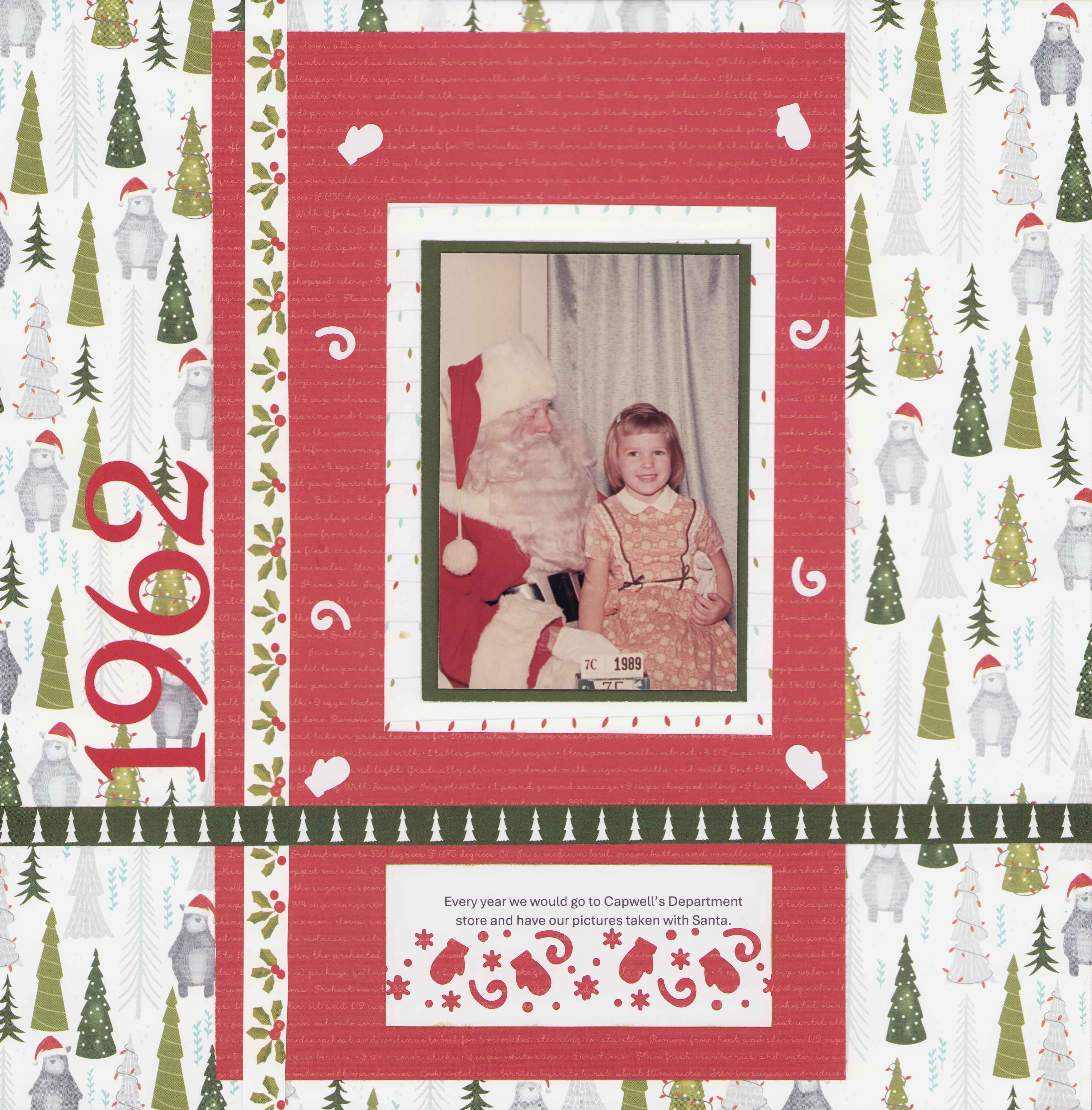
PHOTOS. Pictures of loved ones, important events, or your
favorite things are the centerpiece of most scrapbook
pages. The number of photos you display on your pages
will depend on the page size. The larger the page, the
more photos you can fit. So, when you’re choosing photos,
think of the page size as well as the theme or message you
want to convey. Photos also can direct your color choices
for other page elements.
The basis for your layouts, photos usually set the
color scheme and the mood of the page. Consider color as well as
black-and-white shots and sepia tone.
PAPER. This is the foundation of your scrapbook page.
Choose colors to coordinate with your photos. And as
always, make sure the paper is acid-free.
Patterned papers are available in a variety of colors, patterns,
and themes. Pick them out after selecting your photos to make sure
they complement your shots, not distract from them.
TITLE. The title summarizes and sets the tone for your
page. Try to make it clear, concise, and creative.
Brainstorm ideas before you write or place it on your
layout. The title also can be used as a design element.
JOURNALING. This is the part of your page where you
tell your story. It’s what separates scrapbooks from
photo albums. Let your journaling connect the reader
with the actual event by recording more than just titles,
dates, and names. Also, whether your journaling is
handwritten or computer-printed, make a test copy so
you can determine how much room it will take on your
page and to proofread it.
Answer the basic question of why you’re scrapbooking
these photos in an effort to share the story with others.
EMBELLISHMENTS. Embellishments add interest and a
nice finishing touch to your layout. These items include
stickers, ribbon, die cuts, metal tags, and more.
These accents can help direct the eye around the page.
Try rub-ons, stickers, metal, die cuts, and more.
Tomorrow we will talk about journaling and why it is important.
Creatively,
Carol
Leave a Reply